kagoshima prefecture
Kagoshima Prefecture: Best Foods to Try While You’re There!

Sophia Wasylinko
Posted on December 20, 2023
Share:
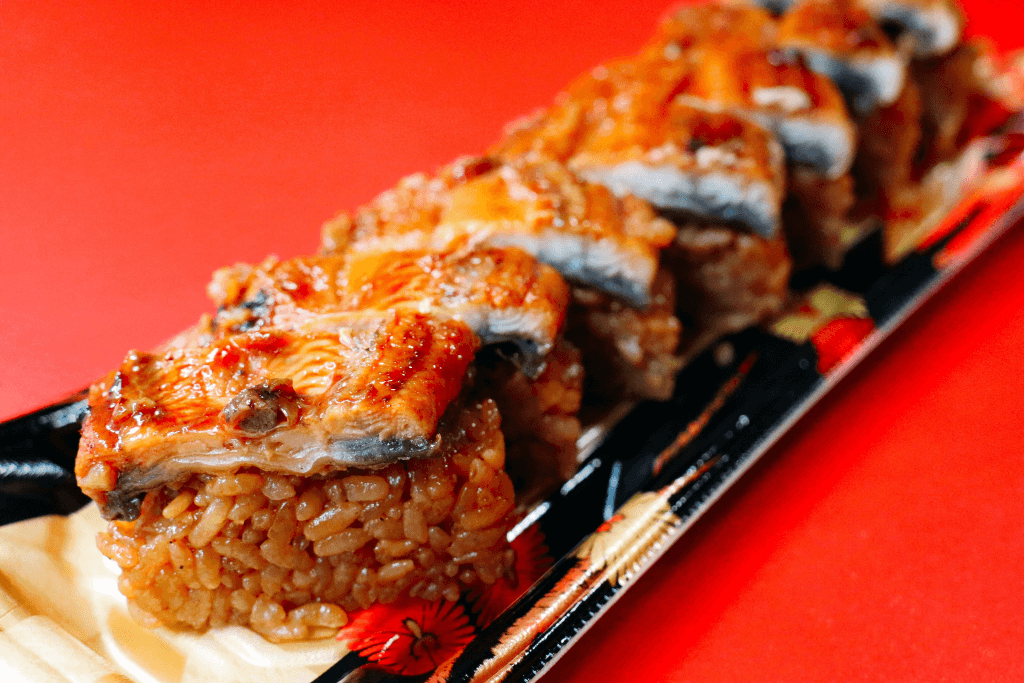
Kagoshima Prefecture, or Kagoshima-ken (鹿 児 島), has a rich heritage, including architecture, art, and food. But deciding what to try first can be difficult with so many exciting dishes. Our choices range from accessible food to more adventurous options. Here are our recommendations for the best Japanese snacks and foods in Kagoshima.
Satsuma-age
The Shimazu clan supposedly brought satsuma-age, a fried fish cake, to the former Satsuma Domain from Okinawa in 1864. The cakes are fried with flour and surimi (fish paste), which contains one or more fish, such as mackerel and sardines.
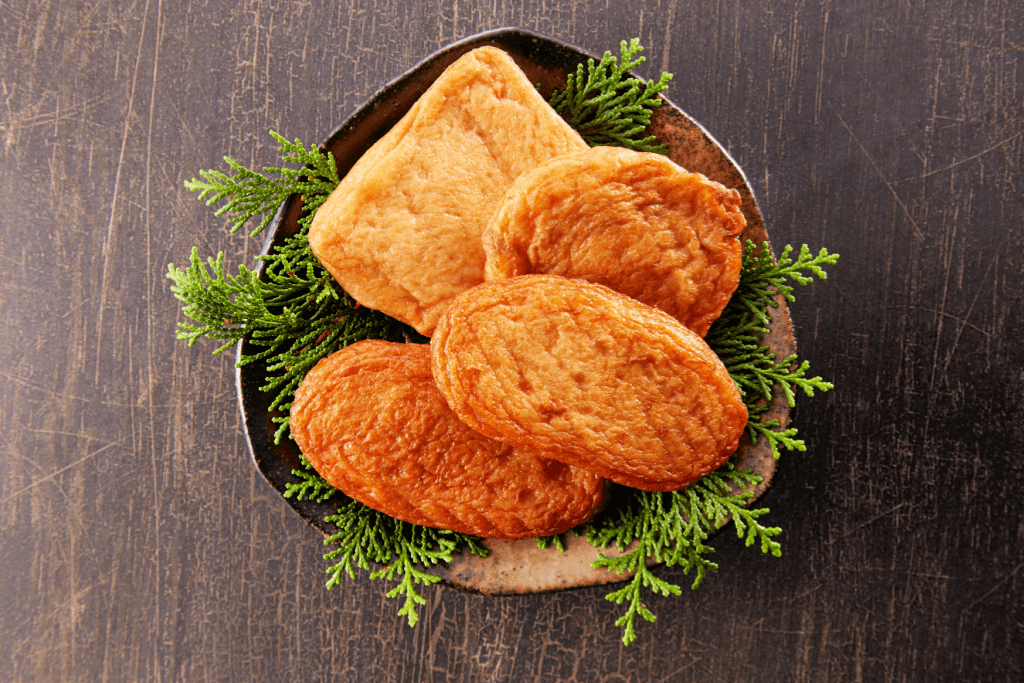
However, other ingredients include shrimp, onion, and beni shōga (pickled ginger). Satsuma-age is easy to make and customize. People can eat it alone or use it as a topping for oden (fish cake stew) and udon noodles. Packaged satsuma-age are also available at street markets, convenience stores, and other Japanese snacks at Kagoshima Airport’s duty-free stores.
Kibinago
Kibinago (silver-stripe round herring) swims year-round near Yakushima Island. People usually catch them in the spring and summer, but they can eat them in any season, although the flavors will differ. Kibinago bones contain calcium and phosphorus, which help strengthen bone structure, as well as Vitamin D and iron. People can eat kibinago in many ways: grilling, drying, pickling, soups, salted tempura, or sashimi with vinegar miso (arranged in a chrysanthemum formation).

This fish is one of the more unusual Japanese snacks and is worth a try if you’re in Kagoshima Prefecture on a summer vacation. It’s most delicious during spawning season as they swim close to the coastline from early spring until the beginning of summer. Kibinago sashimi usually comes with sumiso made from umami-rich ingredients such as tamari soy sauce, sweet rice miso, vinegar, and sugar. The umami-rich tart vinegared miso enhances the rich textured kibinago sashimi.
Are you interested in interesting snacks from across Japan? Check out Sakuraco! Sakuraco delivers traditional Japanese snacks, teas, and sweets from local Japanese makers directly to your door so you can enjoy the latest delicacies directly from Japan!

Torisashi
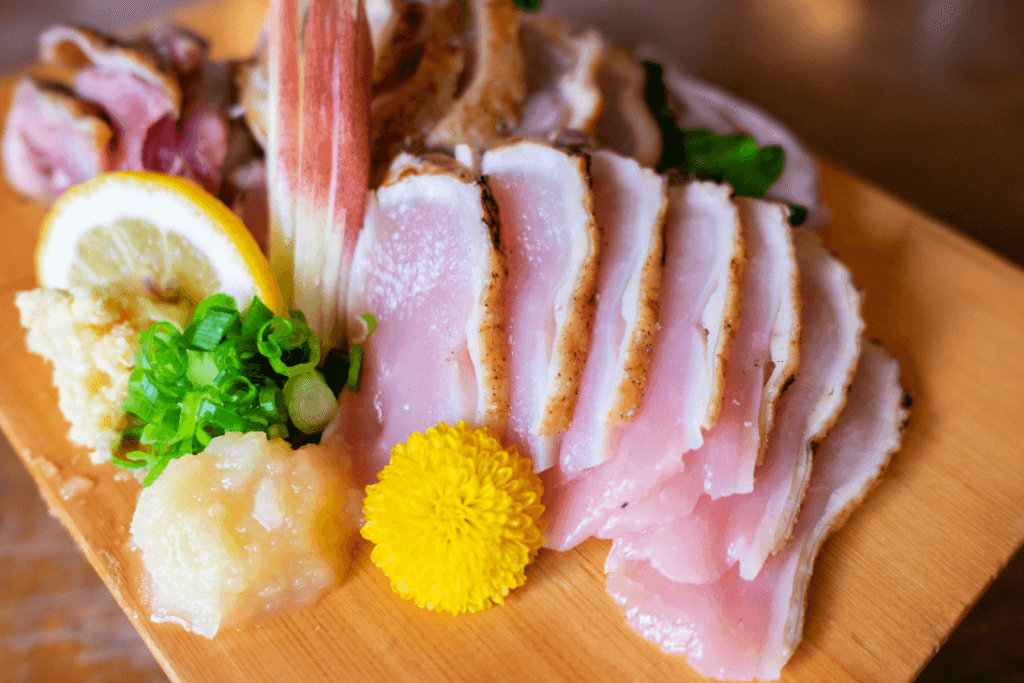
Torisashi is a Japanese dish featuring raw chicken, often lightly seared on the outside while left uncooked inside. People usually serve it with soy sauce, wasabi, and ginger. However, consuming raw chicken carries an elevated risk of food poisoning, emphasizing the importance of only consuming torisashi prepared by a licensed professional chef. Moreover, the chicken used for this dish must undergo specific preparation to inhibit bacterial growth, making it unsafe to attempt making torisashi at home!
The “Black Meats”
Visitors to Kagoshima City and Prefecture should try the “black meats.” Their name comes from the blackness of animals’ skin and feathers, not the meat itself. First, kuroushi (black beef) comes from Japanese Black cattle. It has a tender flavor profile and a melt-in-your-mouth feel due to its well-balanced marbling and fat content. Black beef is available in dishes such as teppan-yaki (sirloin), sukiyaki (hot pot where the meat is cooked in sauce), and yakiniku (grilled meat).
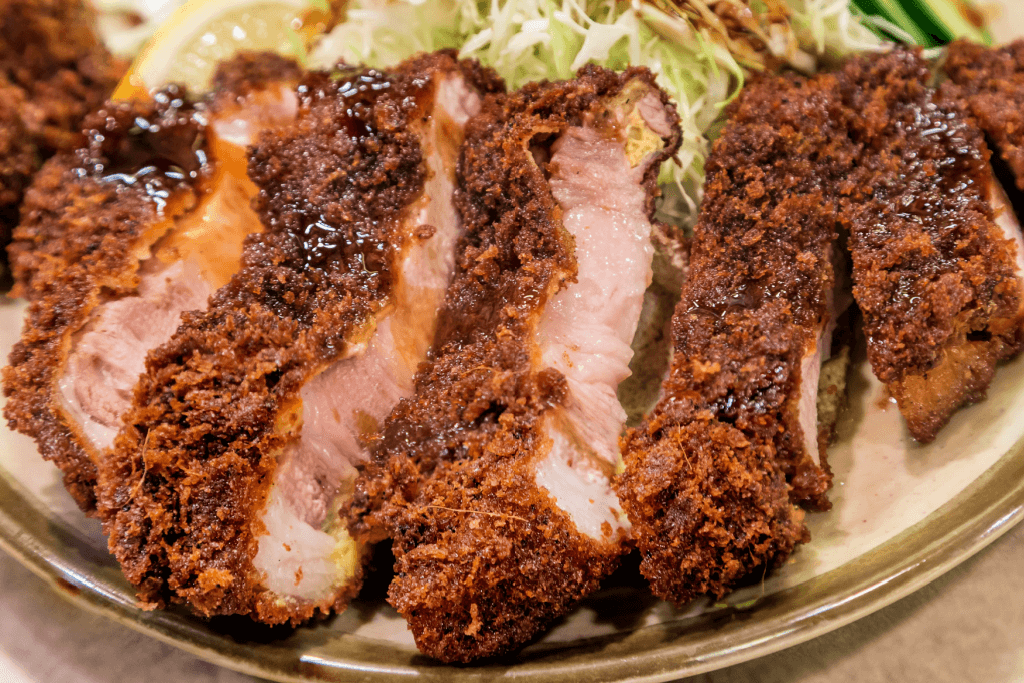
Next is kurobuta (black pork), which uses meat from Kagoshima Berkshire pigs. They are descendants of British Berkshire swine that the former Kagoshima Domain imported in the late 19th century. Black pork is more flavorful and less fatty than regular pork. People eat it in shabu shabu, a hot pot dish that cooks meat in boiling water or broth. It’s also a popular ingredient in Kagoshima-style tonkotsu ramen.
Finally, there’s kuro satsumadori (black Satsuma chicken), initially bred for cock-fighting. The meat is juicy, retaining its elasticity when grilled. Many eat it as torisashi, sukiyaki (grilled over charcoal), or keihan (chicken soup over rice), a specialty of Amami Ōshima. You can’t miss this trio when discussing Japanese snacks and food from Kagoshima.
Tobiuo
We return to Yakushima Island with tobiuo (flying fish). Affectionately called “toppy” by the locals, large schools of them pass by Anbo’s fishing port year-round. Yakushima Island has the highest number of flying fish in Japan.
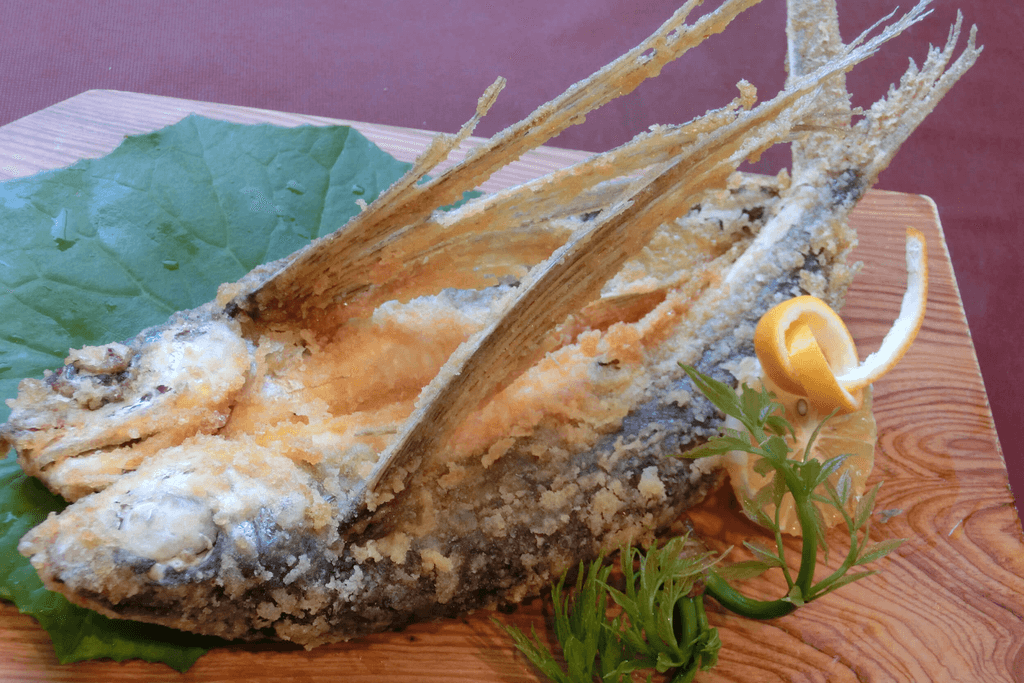
Tobiuo tastes best in the summer as sashimi or as himono (salted and dried). Less adventurous eaters might want to eat them fried. The whole fish, including wings and head, is a popular ramen topping. Minced tobiuo is also in recipes such as hamburgers and fish cakes similar to satsuma-age if you’re looking for tasty and quick Japanese snacks.
Kame no Te
Last but not least is kame no te, one of the more unusual Japanese snacks. The name means “turtle hands,” and with good reason: they resemble turtle appendages. However, they are barnacles found on rocks off Yakushima Island.

Inside the kame no te’s tough shell is meat that tastes like crab. To eat it, the “nails” first need to be cracked. The barnacles are typically boiled in salt water before being added to broth, miso soup, or eaten independently. It’s offered at many Yakushima restaurants between April and June and is a culinary experience visitors should try.
Why should I try these foods from Kagoshima?
Kagoshima is home to many heritage sites, including Sengan-en (home to the Shimazu clan). But it’s also where many animals and plants grow, such as sweet potato and green tea. Kagoshima-ken’s cuisine showcases these ingredients, attracting visitors who want to experience its rich gastronomy.
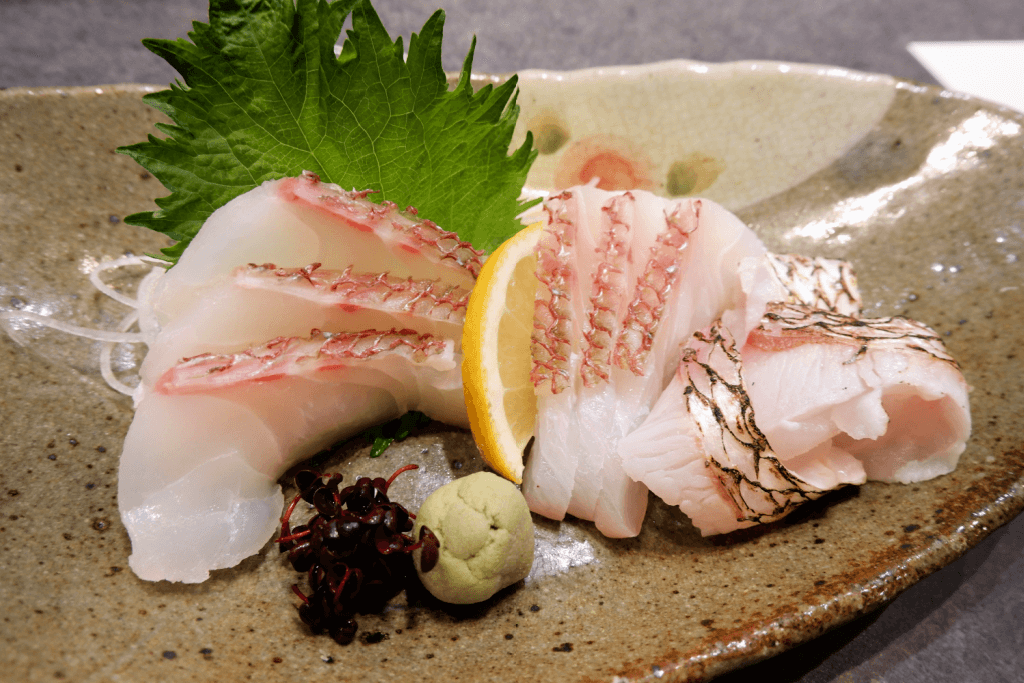
These dishes are made with locally sourced products, such as free-range chickens and freshly caught fish. Buying this food from a smaller store or restaurant supports local businesses, shows appreciation for the residents, and demonstrates a willingness to learn about their culture.
Finally, the foods we mentioned are just a sample of Kagoshima’s unique cooking culture. From sashimi to fish cakes, grilled beef to boiled barnacles, these recipes show the residents’ creativity and the versatility of the ingredients. You may find these dishes in other parts of Japan, but they won’t taste the same as what you’d find in Kagoshima. Have you tried any of these foods before? Which of these Japanese snacks would you eat in Kagoshima? Leave us a comment below.

Discover authentic flavors with Sakuraco
Get Sakuraco 

Discover authentic flavors with Sakuraco
Get Sakuraco 
Related Articles
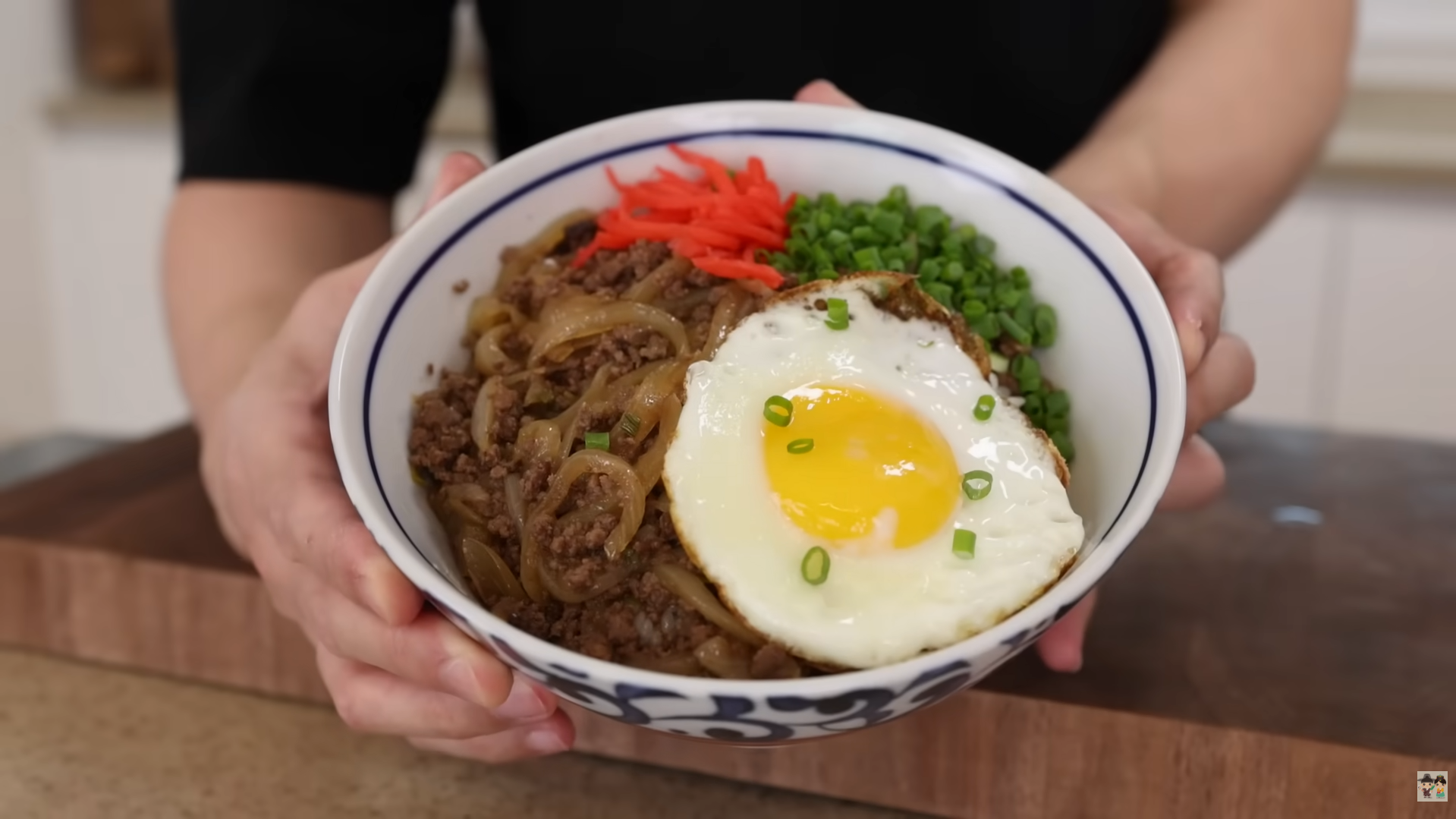
Aaron and Claire Show Us How to Make Gyudon!
If you’re looking for a Japanese comfort food that’s quick, affordable, and full of flavor, Aaron and Claire have a great option. In this video, Aaron shows how to make Gyudon using ground beef instead of the usual thinly sliced beef.

Tonkatsu Luxury Restaurants: Best Ones to Try!
Don’t miss out on tonkatsu if you’re traveling to Japan! Tourists often add the meal to their must-eat list because of its delicious and satisfying nature. Even better, you can elevate the experience by going to luxury restaurants across Japan, where you can experience some of the most celebrated pork cutlets.

Mochi: How is Mochitsuki Made in Japan?
Mochitsuki is the Japanese tradition of pounding steamed rice to make mochi for the New Year. Families and neighbors gather to participate in this lively and meaningful tradition. The teamwork involved helps everyone feel a sense of connection.

Konpeito Candy: What Makes This Starry Treat Shine?
If you are a fan of the famous Demon Slayer series, then you probably know that the favorite treat of the adorable Nezuko Kamado is those tiny, colorful little sweets.


